Top 15 ugly fishes in the world
The underwater is a world of its own with different types of fishes, including ugly fishes. These fishes may not be pleasant to look at but they are very interesting creatures. Some are as ugly as their looks while others are truly amazing creatures.
They say beauty is in the eyes of the beholder. Ugly fishes are part of the beauty of the ocean as they provide variety to the marine species. Therefore, this article presents the top 15 ugly fishes in the world.
Table of Content hide 1 What is ugly fish? 2 Top 15 ugly fishes in the world 2.1 1. Blobfish 2.2 2. Angler fish 2.3 3. Gulper Eel 2.4 4. Viperfish 2.5 5. Stargazer 2.6 6. Asian sheepshead wrasse 2.7 7. Frilled Shark 2.8 8. Red-lipped batfish 2.9 9. Toadfish 2.10 10. Atlantic Wolffish 2.11 11. Green bump head parrotfish 2.12 12. Ambon Scorpionfish 2.13 13. Ocean Sunfish 2.14 14. Stonefish 2.15 15. Goblin SharkWhat is ugly fish?
Ugly fish is exactly as the name implies – an unpleasant-looking alien-like type of fish you will find in the water, especially under the ocean. These fishes live at a very deep depth of the oceanic floor between 4,000 to 5,000 feet. Their ugliness is an important feature for their survival, depending on their habitat.
Meanwhile, fish are classified as ugly based on their looks.
Top 15 ugly fishes in the world
1. Blobfish
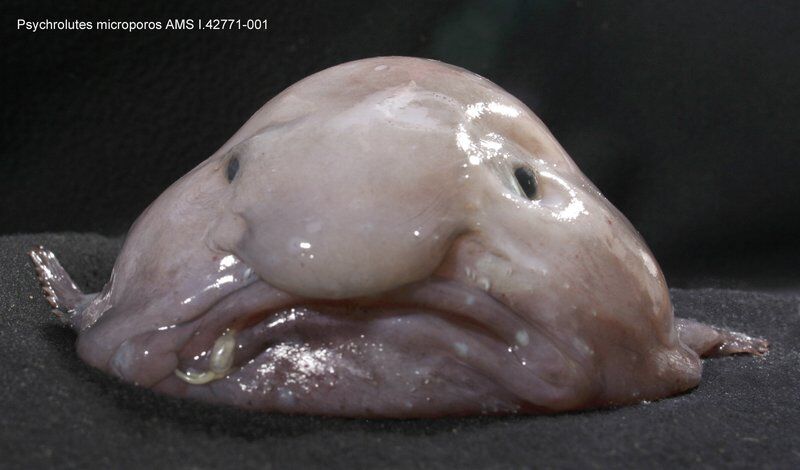
The blobfish has been rated the ugliest fish in the world. According to a 2013 report, this fish was voted the ugliest animal in the world. Located in New Zealand, Australia and Tasmania, the blobfish lives between 2,000 to 4,000 feet below the water surface. However, outside the water, it loses its shape because the water pressure is lowered. Unlike other fishes, the blobfish does not have a bone as its body is supported by the pressures from the water. It also feeds on crabs and molluscs while swimming about on the oceanic floor. Unfortunately, this species of fish has been reported to be on the brink of extinction.
2. Angler fish
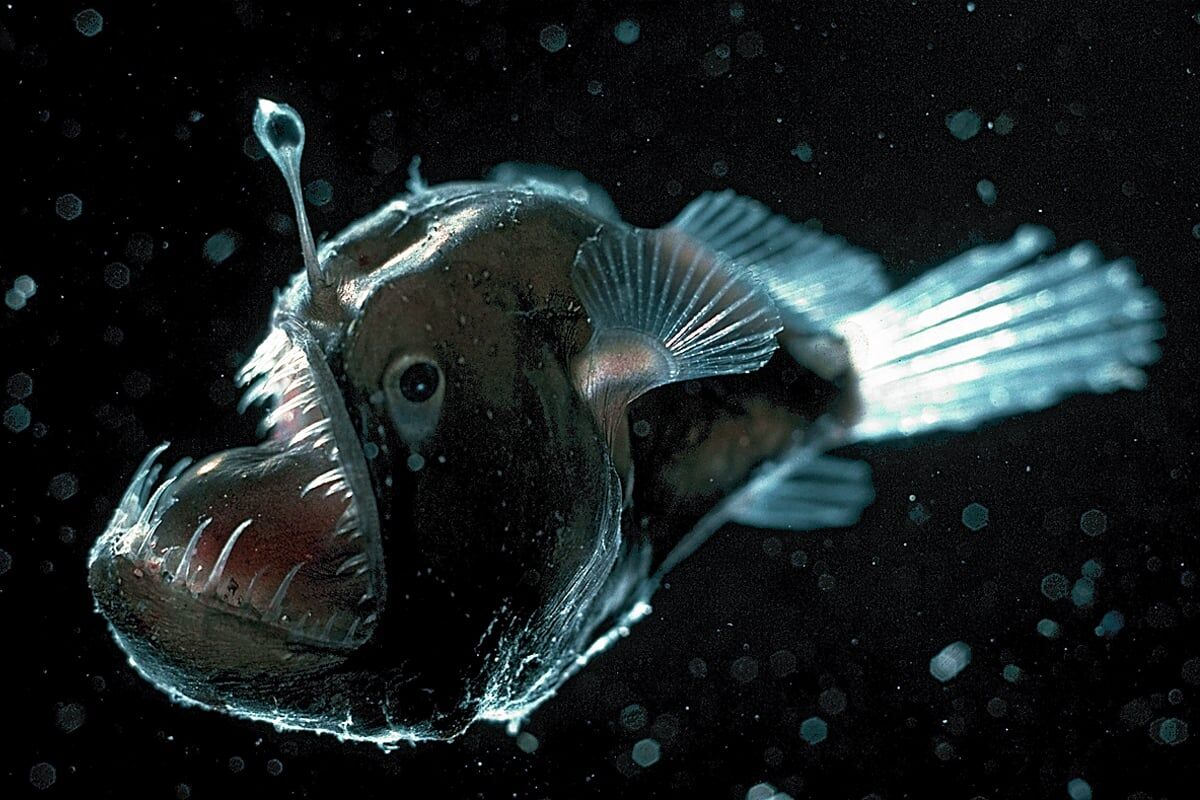
The angler fish lives in the murky depths of the Atlantic and Antarctic oceans. There is little light and the place may feel lonely for the fish which has hilariously been attributed to its angry look. It is ugly due to its angry look, big head, crescent jaw shape and full transparent sharp teeth. It has a very big mouth that can swallow prey that can be double size the of its body.
ALSO READ: Check out the top 10 most dangerous birds on the planet
Female angler fishes are bigger than the males and they are a little different. Unlike the males, the females have a dorsal spine that extends outward above their lips. The angler fish has a lifespan of 20 to 30 years. Some angler fish species can be about 3.3 feet long. There are over 200 species.
3. Gulper Eel
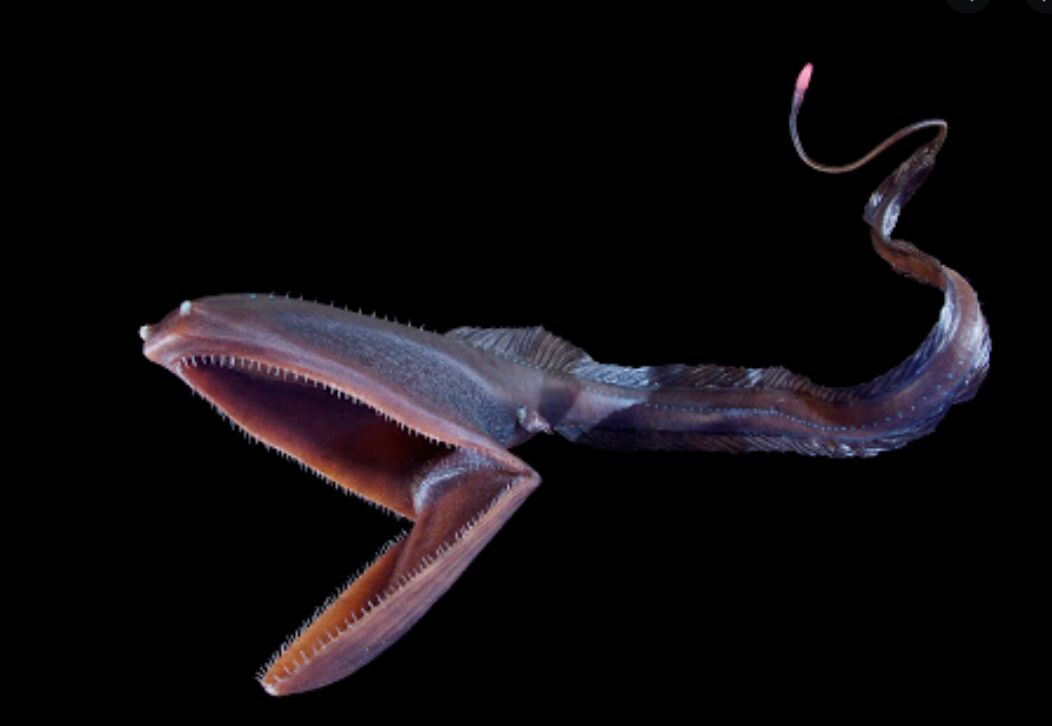
The gulper eel, also known as pelican eel, is a rare species that lives at a depth of 6,000 feet underneath the water, in a dark place where the sun does not reach. Due to their habitat, other creatures rarely live with them and they have few to no predators. An eel looks like a snake, with a thin long body that grows to a length of 3 to 6 feet long. However, the gulper eel is a little bit different with its large head which can be inflated like a balloon. Its tail is whip-like and has a photophore which is an organ that produces light. It uses the tail for movements.
The gulper eel’s tail flashes red light sometimes and glows pink most times. It is believed that it uses those lights to attract prey like squid and other small invertebrates. You can find this fish in most oceans around the world and it has a lifespan of about 85 years.
4. Viperfish
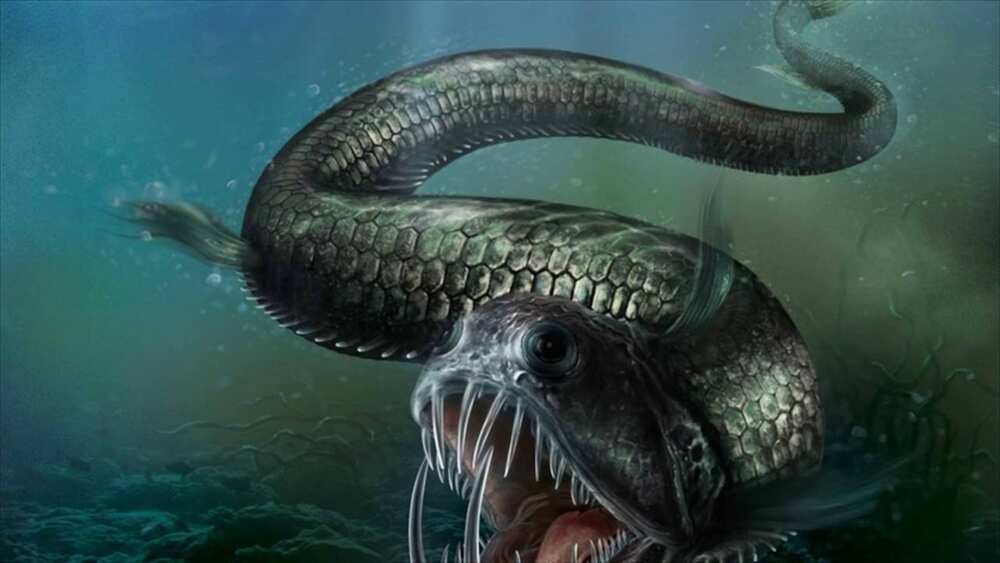
The viperfish can be 30 cm (about 11 to 12 inches) long at a depth of 5,000 underwater. It has different colours, ranging from black, dark silvery blue or green to silver. The size of its teeth makes it impossible for the fish to close its mouth. It feeds on feeds on small pelagic organisms such as small fish, shrimp and squid. The viperfish catches its prey by piercing and swallowing them whole.
Behind its head is a first vertebra that acts as a shock absorber. The photophore in its long dorsal spine is used to attract its victim. The light-producing organ is called bioluminescence. Its stomach is very big and this helps it to store food when there is an abundance. Meanwhile, the viperfish has a lifespan between 15 to 30 years.
5. Stargazer

The stargazer is also known as tube-nosed Stargazer, Popeye Fish, and mother-in-law fish. It often buries itself in the sand to catch its prey like crabs and other small fishes. Unlike other fishes, the stargazer has its eyes on the top of its head, which is how it gets its name. It also has fringed lips that are slant vertical and a heavy flat big head with a tapered body.
This fish has two big spines close to its eyelids and it is poisonous. However, it is a delicacy in some cultures since it is not poisonous when cooked. There are about 50 of these species. The biggest species can weigh 20 pounds (9 kg) and can be as long as 3.5 meters. Two species – Uranoscopus and astroscopus – have an electric organ that causes shock, despite not having an electric connector, unlike other electric fish.
The stargazer can be found in any ocean around the world and has a lifespan between 5 to 6 years.
6. Asian sheepshead wrasse
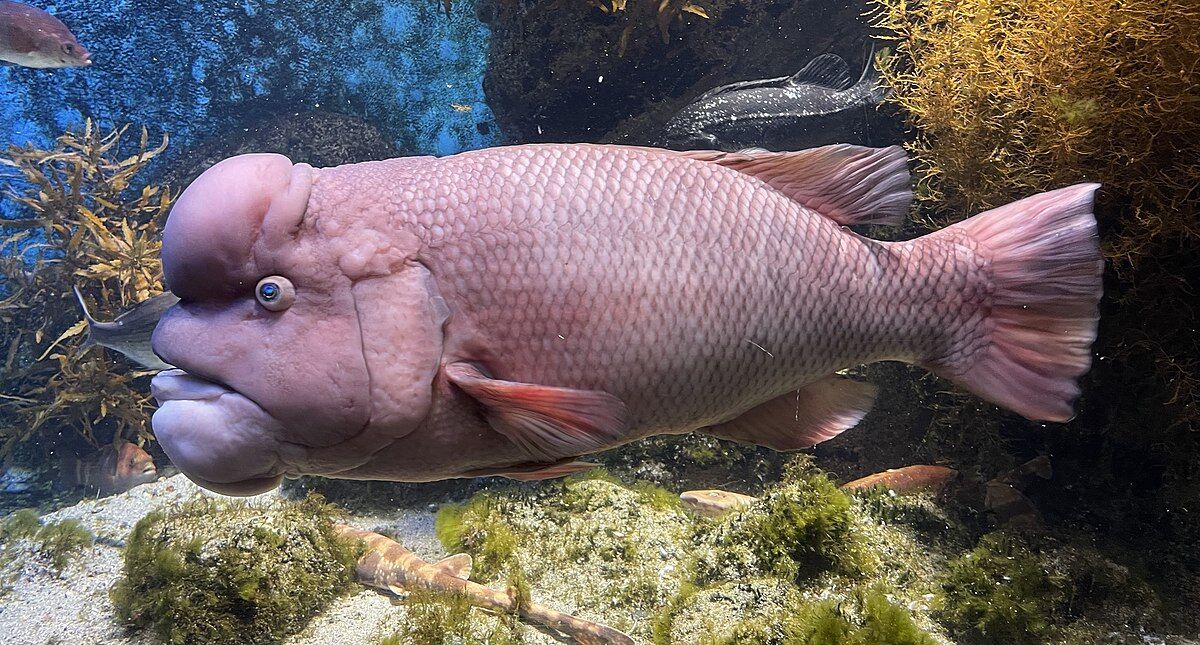
This is the biggest species among the wrasse family. It lives a solitary lifestyle, preferring subtropical environments and rocky reef areas. It only mingles together with others during the breeding season. The Asian sheepshead wrasse also known as Kobudai in Japan, is a friendly fish to humans. It can reach up to 1 meter in length and the highest weight record is 32 pounds (14.7 kg).
This fish has a swollen-looking head, thick lower jaw, and distinctive chin and its teeth snarled in all directions. It can change gender. The biggest female can turn into a male by going through some physical changes. It feeds on small fish, crustaceans, clams, oysters, and similar animals. Asian sheepshead wrasse can be found in the western Pacific Ocean of North and South Korea, China, and Japan. It has a lifespan of between 25 to 30 years.
7. Frilled Shark

The frilled shark is also called the lizard shark, scaffold shark and silk shark. It is a rare species of shark that was discovered in 2014, measuring between 1 to 1.5 meters. The frilled shark got its name from the gills around its neck forming a red fringe. It uses its needle teeth to attract its prey and then strikes, swallowing it whole just like a snake does. The frilled shark uses its needle teeth to attract its prey and then strikes its prey and swallows it whole as it opens its mouth wide, just like a snake.
8. Red-lipped batfish

The red-lipped batfish lives on the sandy ocean floor and reefs around the Galapagos Islands and off the shores of Peru. It has bright red lips and a facial expression that makes it look like it does not like the makeover. The bright lips also have a dangling projection called illicium, between its two eyes. This fish uses the projection to attract its prey, like crabs, molluscs and shrimp, into its mouth. The red-lipped batfish has a lifespan of about 12 years. It is also not a good swimmer.
ALSO READ: Polish Chicken: Unique bird breed known for its flamboyance, puffed head-feathers
9. Toadfish
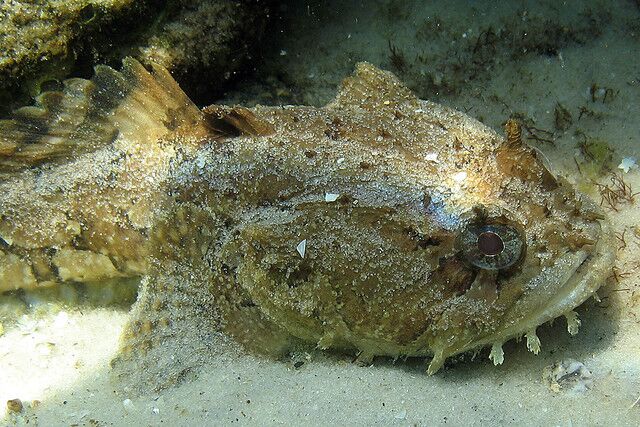
The toadfish looks like a toad. It is also called a frogfish or dogfish. Like toads and frogs, this fish makes croaking noises that can be heard from outside the water. It has a flattened broad head with a large mouth that has strong teeth. There are 83 of this species and their scaleless skin is covered by mucus. They also belong to the Batrachoididae family.
The toadfish is very poisonous, yet it is edible if it is cooked properly. There is also no antidote to the poison, which is said to be more dangerous than the black widow spider venom multiple times.
10. Atlantic Wolffish
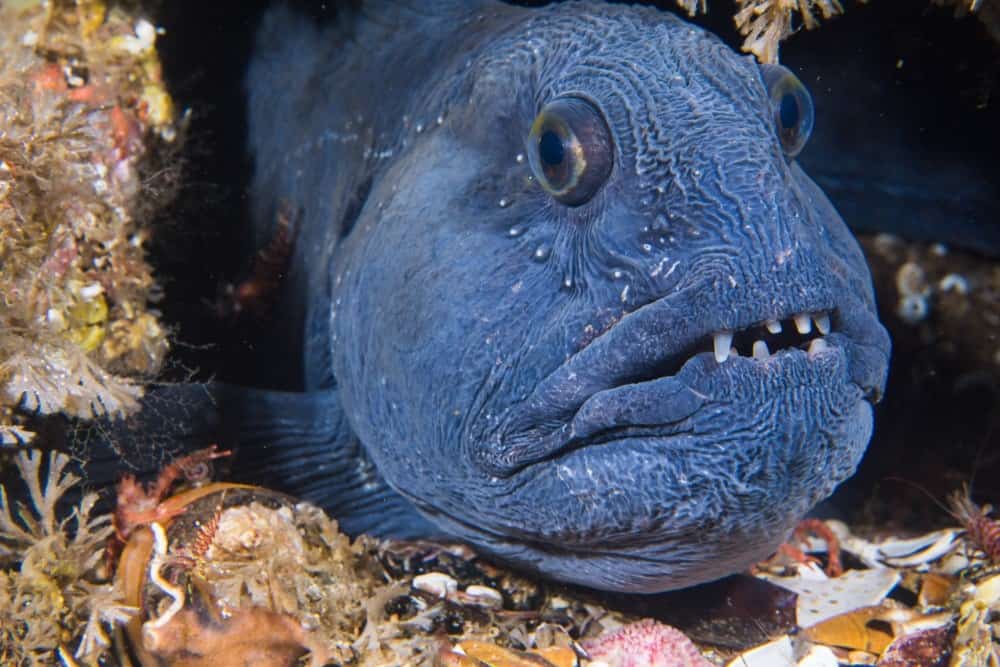
This fish is named due to its similar appearance to a wolf. Its teeth can crush crustaceans or molluscs almost immediately after they get to their mouth. This is why it prefers prey with soft bones. There are only five species of the wolffish which can be 0.75 feet long with a weight of 50 pounds on average.
The Atlantic wolffish is one of the endangered species, according to the IUCN list. This fish swims all the time and cannot stop, since it does not have a swimming bladder filled with air.
11. Green bump head parrotfish

The green bumphead parrotfish has similar features to the Asian sheepshead wrasse, except it looks more like a parrot with its beaklike mouth. It has the unique ability to encase itself in a mucus cocoon at night, maybe to hide from predators. Its teeth are stronger than many metals which it uses to crush food. The green bumphead parrotfish is a voracious eater and can consume coral at a pace of up to 20 bites every minute. It lives in coral reefs in the Atlantic, Indian, and Pacific, Indian and Ocean’s peripheral areas and has a lifespan of about 40 years.
12. Ambon Scorpionfish

The ambon scorpionfish is also called firefish, hairy scorpionfish, stingfish, and ambon rockfish. It has an algae-like appearance and can even be seen around algae clumps. This fish is highly poisonous as the venom on its back has been reported to have killed it. It is a very patient predator and can wait for its prey to come very close before it strikes.
The ambon scorpionfish can change colours and feed through suction. Suction in this case is making water flow at higher pressure by opening its mouth widely and fast, thereby dragging its prey into its mouth. The ambon scorpionfish lives on the coasts of the Red Sea, Yellow Sea, Fiji, Indonesia, and Australia and has a lifespan of about 15 years.
13. Ocean Sunfish
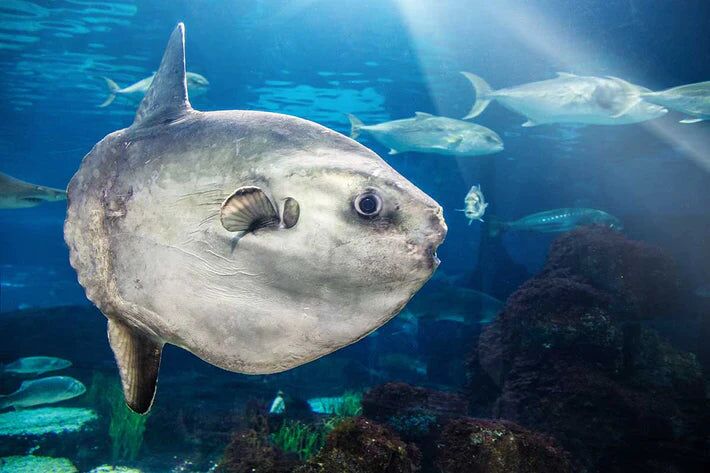
The ocean sunfish is also known as Mola Mola due to its whitish-round shape. It is a big, heavy fish that is up to 2.5 m (8.2 feet) long. Averagely, it can weigh a maximum weight of 2,300 kg (5,100 Ib), which is the weight of some SUVs. Although it lives under the depths of 600m (2,000 feet) of the ocean, it swims towards the surface to sunbathe to keep it warm, which is why it is named sunfish. While sunbathing, some seabirds pick off parasites from their bodies as the sunfish can host up to 40 parasites in the body.
14. Stonefish
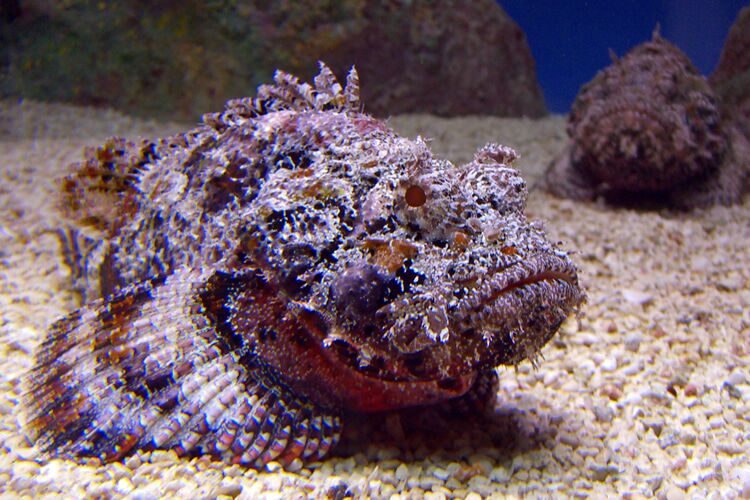
The stonefish is not only one of the ugliest fishes in the world, it takes the top spot as the most dangerous fish in the world. It has two venom glands on its 13 sharp dorsal fin spines that release poisons when stepped or disturbed. There are also three anal spines and two pelvic underneath the skin. However, it does not use its venom to kill but rather to capture prey.
The stonefish can be located at coral bottoms under ledges or rocks under Indo-Pacific waters of northern New South Wales, Queensland, and the Great Barrier Reef. It has a lifespan of between five to ten years.
15. Goblin Shark
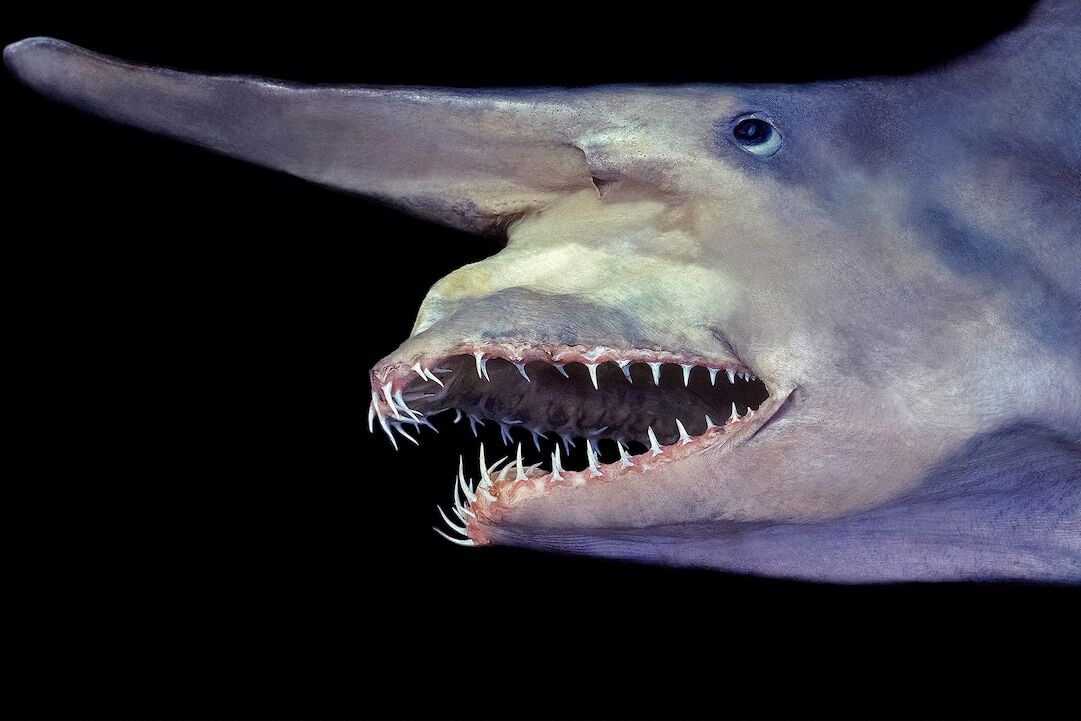
Named after a Japanese demon with the same features, the goblin shark has an unusually long snout and a pinkish body, with transparent skin. Its jaw is connected by elastic ligaments. If prey approaches, the jaw protrudes, enabling the shark to launch its entire mouth into it at a range of 8.6 to 9.4 per cent of the total of its full body length. This fish usually habits around the deep waters on the edges of continents around the world. It has a lifespan of about 60 years.
ALSO READ: Albino monkey: Characteristics of this rare primate, where you can find it
ncG1vNJzZmivp6x7tLfAm5isoF6YvK571KCjsmWWnsCpsdJmoKdlpJ2ybsPOq6OdZw%3D%3D